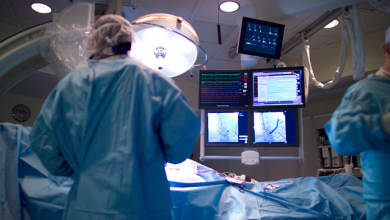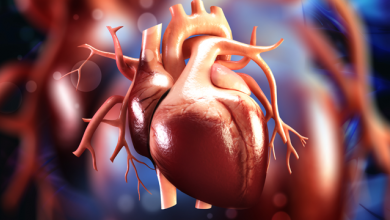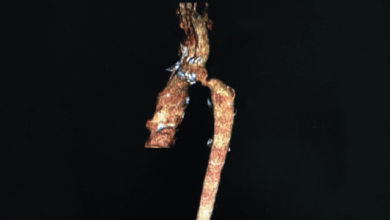Search results
Author(s):
Catherine R Weinberg
,
Amier Ahmad
,
Boyangzi Li
,
et al
Added:
3 years ago
Dyspnea, palpitations, edema, and fatigue are common symptoms during pregnancy. For women with congenital heart disease (CHD), it may be difficult to discern whether symptoms are due to normal pregnancy or underlying cardiac disease. Although most women with CHD tend to experience successful pregnancies, morbidity and mortality are significantly increased with more complex CHD lesions.1–6 Women…
View more
MXR for Cardiology
Author(s):
David Bloom
,
Michael K Southworth
,
Jonathan R Silva
,
et al
Added:
1 year ago
Article
Author(s):
Jonathan N Johnson
,
Frank Cetta
Added:
3 years ago
The last 60 years have seen significant changes in the care of congenital heart disease for both pediatric and adult patients. Increasing patient survival rates have widened the number and scope of potential patients seen by congenital cardiologists.1 These patients often undergo multiple surgeries, particularly since few lesions are truly ‘repaired.’ The majority of patients will have residua or…
View more
Author(s):
RJ Kanter
Added:
3 years ago
Introduction
Compared with patients with structurally normal hearts, there is an even greater need to suppress pathologic tachycardias in patients with congenital heart disease. The decrease in diastolic filling time and potential loss of atrioventricular (AV) synchrony are more poorly tolerated in these patients, proportionate to the degree of underlying systolic and diastolic dysfunction…
View more
Author(s):
Nico A Blom
Added:
3 years ago
Cardiac resynchronization therapy (CRT) using biventricular pacing has been proven to be effective in adult patients with left ventricular (LV) systolic dysfunction and QRS prolongation. In this group of patients, CRT improves exercise tolerance, symptoms of heart failure and all-cause mortality.1 In addition, there is growing evidence that inter- and intra-ventricular dyssynchrony induced by…
View more
Author(s):
Usha Krishnan
Added:
3 years ago
Pediatric interventional cardiology was born 40 years ago in 1966, when William Rashkind developed balloon septostomy in neonates with transposition of the great arteries.1 Almost a decade later, Andreas Gruentzig developed coronary angioplasty (between 1972 and 1976), which heralded an explosive era of interventional therapy for adults with heart disease, overshadowing the advances in…
View more
Coarctation: A Review
Author(s):
Marc G Cribbs
Added:
3 years ago
Article
Author(s):
Ajitha Kulasekaran
,
Lorna Swan
Added:
11 months ago
Author(s):
Yury Malyshev
Added:
2 months ago
AF Symposium 24 — Dr Yury Malyshev (Mount Sinai Hospital, US) joins us to discuss the findings from three studies focusing on the long-term effects of pulsed-field ablation (PFA) on coronary arteries.QuestionsWhat is known currently about the effect of PFA in Coronary Arteries? What is the importance of this topic?What was the study design and cohort?What are the key findings?Who are the take…
View more
Transseptal Access After Interatrial Shunt Devices: Try Everything Once and Great Things Twice
Author(s):
Molly Silkowski
,
Nicholas Amoroso
Added:
4 months ago
Article
















